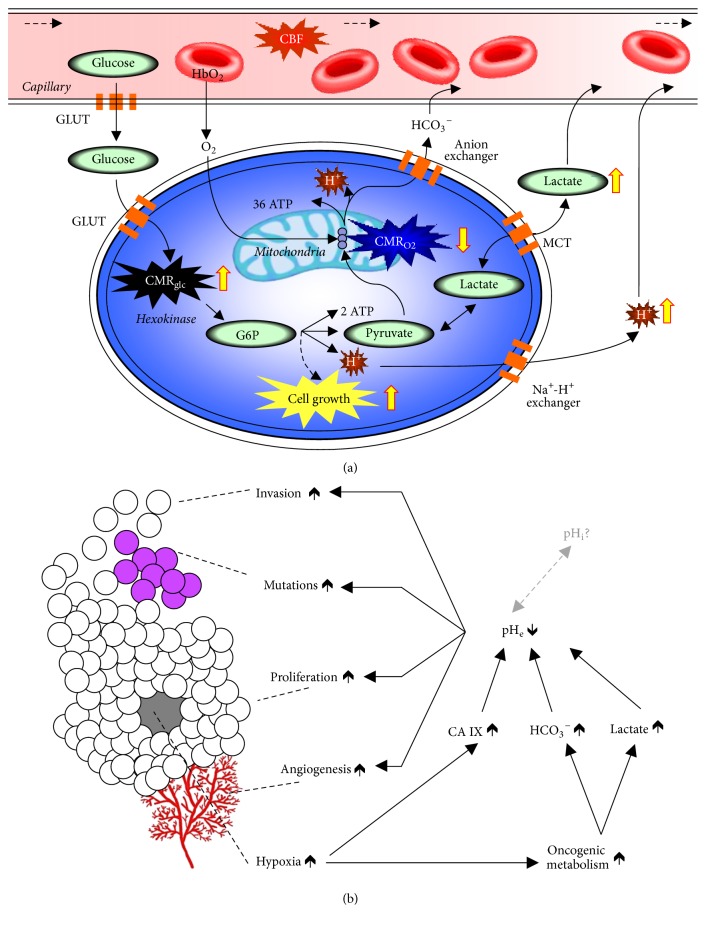Figure 2.
Relationship between tumor metabolism and tumor biology. (a) The tumor microenvironment, compared to the normal neuropil, is characterized by aerobic glycolysis and endothelial dysfunction [15]. CBF, cerebral blood flow; GLUT, glucose transporter; HbO2, oxyhemoglobin; G6P, glucose-6-phosphate; H+, hydrogen ions; CMRglc, glycolysis; CMRO2, oxidative phosphorylation; MCT, monocarboxylic acid transporters. To maintain intracellular pH homeostasis acidic constituents are extruded out to acidify the extracellular space. (b) Tumor biology is intricately linked to cancer metabolism. Tumor growth (i.e., invasion, mutation, and proliferation) has been linked to acidic pHe arising from aerobic glycolysis [15]. The altered metabolic pathways, to support cell growth, create byproducts that are actively exported out of tumor cells to help maintain neutral intracellular pH (pHi), but this comes at the cost of acidification of the extracellular milieu (pHe). These multifaceted processes all decrease pHe while maintaining near normal pHi, which lead to tumor invasion, mutations, proliferation, and even angiogenesis.

